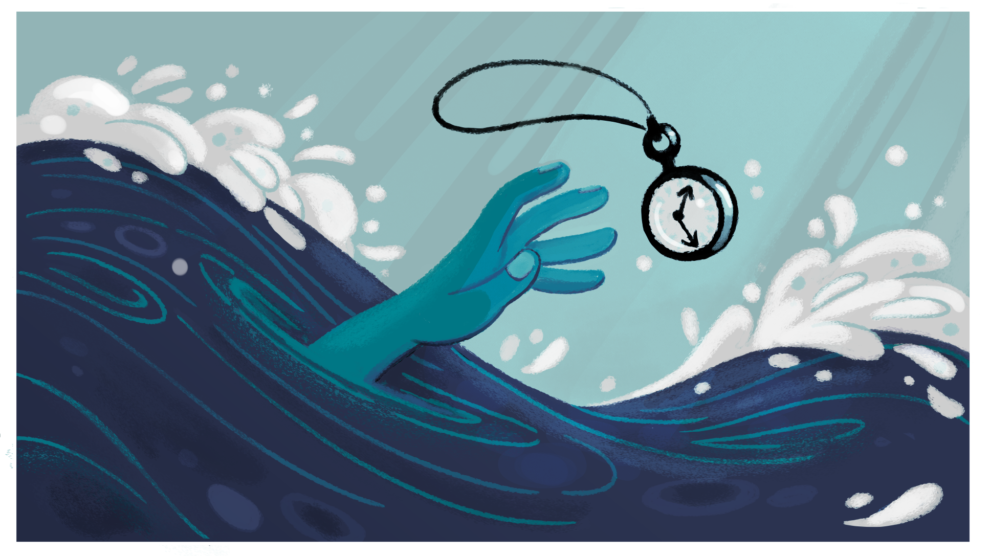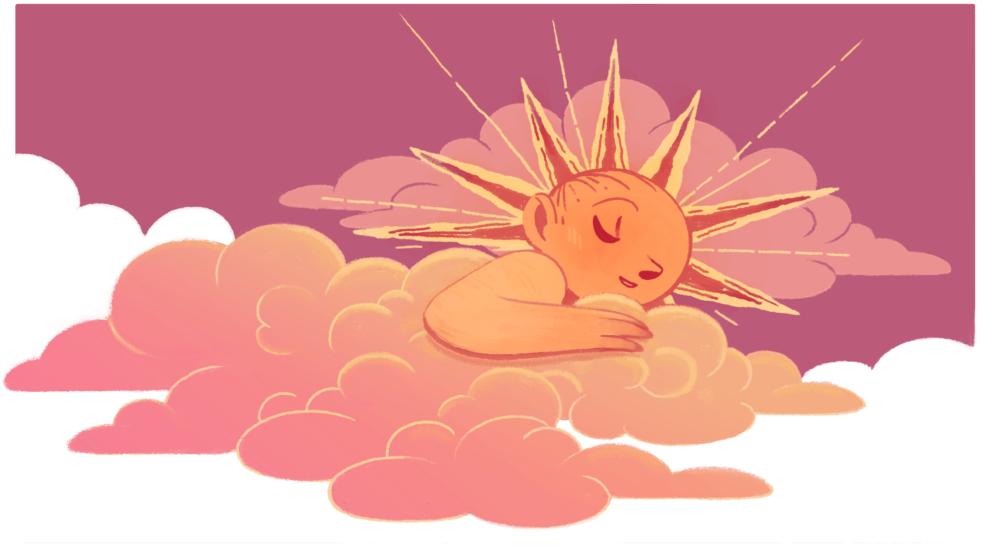August 5, 2021
Ayahuasca: Caramel Gold?
Healing in the Amazon Forest
By Miguel Pinheiro
Ayahuasca is part of an ancient Native American medicinal tradition. Like many Indigenous practices, the ritualistic use of ayahuasca has historically been ignored and repressed by the Western world. Recent scientific studies have corroborated its therapeutic effects and have inspired the thousands of spiritual seekers, celebrities, and adventurers who fly each year to South America in search of a life-changing experience. This mystic potion is now being explored by the nascent billion-dollar psychedelic industry, but what’s in it for the Native populations of the Amazon rainforest who created the medicine in the first place?
The Chaka Runa: a Bridge Between Worlds
The first recorded Western contact with ayahuasca came from European missionaries who viewed its use with distrust. In 1851, the English ethnobotanist Richard Spruce classified the plant species as Banesteria caapi (now known as Banisteriopsis caapi), one of the plants used in the preparation of ayahuasca, and observed its use firsthand.1 He described shamans using ayahuasca for healing and divination. But it remained a profound mystery to the Western world how the shamans learned to combine the right plants in order to prepare this sacred medicine; by one estimate, there are as many as 80,000 plant species in the Amazon.2
According to Indigenous oral accounts, the spirits living inside the plants taught the people of the Amazon how to combine certain plants to produce a potion that could heal the world. Those who ingest ayahuasca during traditional rituals describe going on a journey embellished with colorful fractals, spiritual entities, and ethereal landscapes. At the end of this journey, spiritual travelers are left with a feeling of oneness with the universe.
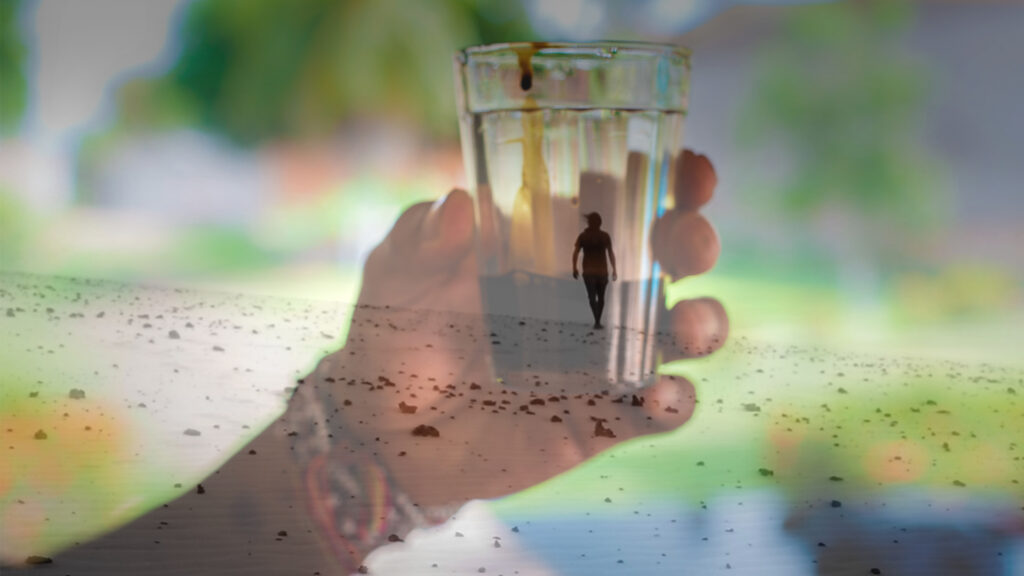
Richard Evans Schultes, the most renowned ethnobotanist of the twentieth century, wrote about the chemical specificities of the ayahuasca preparation from a colonial lens: “One wonders how peoples in primitive societies, with no knowledge of chemistry or physiology, ever hit upon a solution to the activation of an alkaloid by a monoamine oxidase inhibitor. Pure experimentation? Perhaps not. The examples are too numerous and may become even more numerous with future research.”3
This much I knew when I met Claudio in the breathtaking Brazilian landscape of Lençóis Maranhenses, a seemingly infinite stretch of sand punctuated by lakes created from abundant rainfall, a haven of peace and startling beauty. Claudio was born in the Andes. Early in his life, he traveled across the mountains until he reached the Peruvian Amazon. There he was initiated into the secrets of healing plants. Today he calls himself a Chaka Runa—literally “bridge-man”—a middleman who enables the spirits of the forest plants to connect with the groups of city dwellers who come to him for a curative experience.
Claudio received this ancient knowledge from his Maestro, Fermín Murayari, an eighty-year-old man who to this day works as a sheripiari (local doctor) in the Peruvian forest. Maestro Fermín is an Indigenous healer from the Yine Nation who was initiated in turn by his grandfather, a sheripiari from the Kokama nation. The transmission of this knowledge across groups and generations suggests that the secrets of the plants have always been part of a complex network of cultural exchange. Fermín was recently recognized by the government of Peru for his cultural achievements, described as “an Indigenous sage who contributes to the investigation, safeguarding and dissemination of Amazonian ancestral knowledge through the use of medicinal plants.”4
The Vine of the Souls
Also known as yagé, caapi, abuela, cipó, pindé, mihi, or “the vine of the souls,” ayahuasca is consumed during ceremonies that usually take place at night. The night I participated in a ceremony was long and filled with sweet secrecies. As the ayahuasca was slowly absorbed by my body, I felt a different sensorial immersion with respect to the world around me. Some seekers/travelers report experiencing multicolored visions and a tremendous feeling of happiness or compassion. They describe a deep dive within the self, a cosmos being opened at their doorstep. Claudio offered me his guidance and protection while singing traditional Indigenous songs. At times he, too, entered a trance-like state.
After the eight-hour ritual concluded, Claudio left the house and sat outside to enjoy the early morning sun. He took his time with words as he explained to me the underlying sense-of-being called the “Andean Cosmovision,” which considers the sacred nature of life to be immanent, lying inside each being and each stone.
“Let’s say it this way,” Claudio explained to me. “To us, everything is holy and rests within, and it’s all part of a relationship from within, be it with the moon, with the mountains, with the lakes, anything really … And for each thing there are the rules of nature that one needs to follow in order to stay at ease.”
The cosmovision sounded strikingly different from my European-taught conception of creation: a world made by an all-seeing and all-loving but punitive God, to whom I owe love, devotion, and fear. My experience with ayahuasca showed me that Claudio carries with him a different way to portray the invisible side of the world.
Upon first meeting Claudio in Rio de Janeiro a couple of years ago, I was surprised by his magnetic, silent presence. He inspired awe, using a simple and gentle way of communicating. Now in his forties, Claudio doesn’t come across as a New Age guru making use of psychedelics or as some kind of wizard. “There’s nothing special about me,” he assured me. “I’m just a Chaka Runa, not a magic healer.” Still, over the years, more and more people have come to him for guidance on an existential quest to address a feeling of emptiness within them, the result of the artificial lives endured by many living in big cities. According to Claudio, people are disconnected from themselves—and from each other. “Ayahuasca goes to the core of each one, and from that core reemerges that ancestry, that belonging,” he explained. “It is the medicine that heals, that’s her signature. Only that constitutes the true cure, the one that arises from within.”

The Andean Cosmovision consists of Three Worlds: The Hanan Pacha (Higher World, ruled by the Condor), The Kay Pacha (Present World, ruled by the Puma), and The Uthu Pacha (Underworld, ruled by the Snake). According to Claudio, the symbol indicated in the image on the left is of the Condor, the protective animal of the Hanan Pacha. The Condor is revered because it is the one that has direct contact with the sun. The symbol in the image on the right shows the Ñaupa Chunchu, or “first man,” the civilizing first Inca. He was responsible for the arrival of agriculture and of the sacred cults.
A similar view is shared by Michael Pollan, Professor of Journalism at UC Berkeley and author of the 2018 book How to Change Your Mind: What the New Science of Psychedelics Teaches Us About Consciousness, Dying, Addiction, Depression, and Transcendence, which investigates psychedelic plants and their potential uses in a therapeutic context. Speaking at the Aspen Institute in 2018, Pollan delineates the experience of working with a guide when taking substances like ayahuasca: “Many people who have had powerful psychedelic trips put it in a box labeled weird drug experience. But with a guide, it’s not labeled. It’s not a product of the substance you’ve taken—it’s you, activating something in your mind, releasing something.”5
The Amazon Basin—where cities float, dolphins speak, and plants are spirits—is the greatest hotspot of new plant-derived pharmacological substances on the planet. The rest of the world is only beginning to understand what Native Americans have held sacred for generations. Despite modern technological advances, the forest remains an essential and refined provider of new, medically significant substances. The vitality of the Amazon region, however, is currently threatened by illegal logging, land grabbing, mining, and poorly regulated development projects, raising concerns about the forest’s future.6 With the destruction of the forest, local Indigenous populations are at risk of losing their land, their rights, and their unique biocultural diversity in the global rush to access the many resources found within the rainforest.7
A Crime Against Consciousness?
In Quechua, aya means “soul” and waska means vine. The plant’s name and the Quechua language are part of the legacy of the Inca Empire, the largest pre-Columbian civilization in South America. The Incan civilization was at its apex from the thirteenth to the sixteenth centuries. Historians estimate that forty thousand Incas governed a huge territory with approximately ten million inhabitants speaking over thirty different languages.8 To unify the empire, Quechua became the most widely spoken Indigenous language in the Americas, and it remains so today. Yet although the Incas may have been the ones to give these healing plants their name, the knowledge of these plants and of their properties is almost certainly much older.9
However, a widely used and ancient mixture like ayahuasca is strictly forbidden in most countries. It seems counterintuitive that this ancient medicine used for centuries in South America—which serves as a healing potion to the locals and attracts thousands worldwide—should be forbidden nearly everywhere.10 Its therapeutic abilities have thus remained inaccessible to much of the rest of the world.
To better understand this dilemma, I contacted Carlos Tanner, a North American who used to work as a production manager for a newsweekly and who endured a long journey with heroin addiction. Carlos sought help in Peru, and in just three weeks healed his addiction, released his childhood traumas, and cured a mysterious digestive issue that Western doctors had been unable to diagnose, all thanks to the plant medicine tradition of ayahuasca. After his profound experience, Carlos decided to become a healer and a few years later founded The Ayahuasca Foundation, an organization that supports the preservation of Indigenous wisdom and culture. After several years of experience running ayahuasca retreats, Carlos believes that laws designed to protect people should not prohibit them from ingesting certain substances. “The healing tradition of Ayahuasca, or curanderismo,” he explained, “is based on the truth that Nature will heal itself, and humans are a part of Nature.” Carlos believes that, in order to restore health and balance to our communities, a paradigm shift will be necessary to reorient our thinking toward ancestral perspectives.
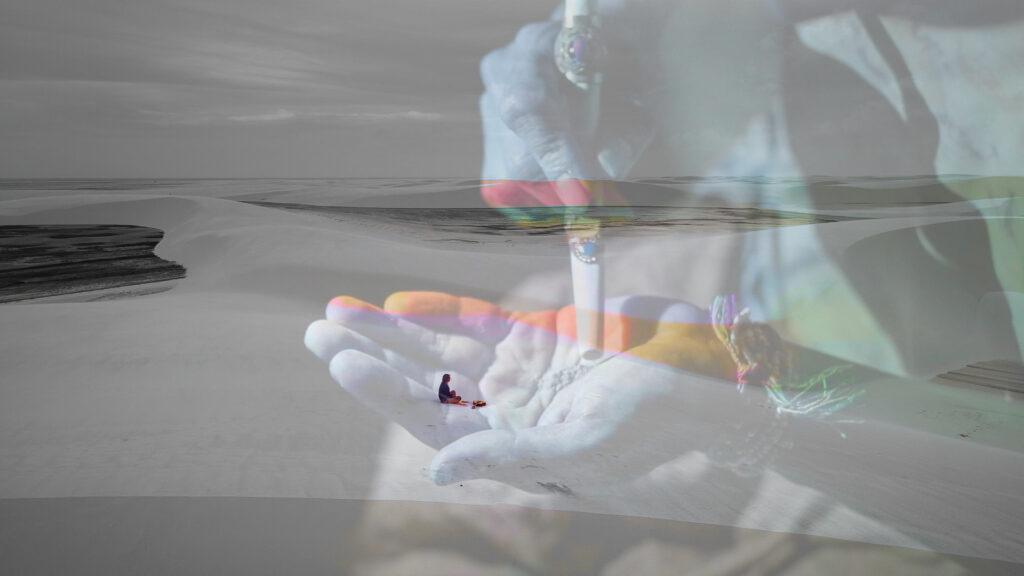
Records of sixteenth-century Spanish and Portuguese explorers describe their encounters with Indigenous groups taking ayahuasca. “… the ololuihqui is a kind of seed like lentils produced by a type of vine in this land, which when drunk deprive[sic] of the senses, because is very powerful, and by this mean[sic] they communicate with the devil, because he use[sic] to talk to them when they are deprived of judgement with the said drink, and deceive them with different hallucinations, and they attribute it to a god they say is inside the seed …”11
One of the active pharmacological ingredients in ayahuasca is dimethyltryptamine, or DMT, which is considered a hallucinogenic drug. Since the late 1960s, DMT has been included in the most restricted portions of international controlled substances lists, alongside synthetic compounds such as heroin and LSD.12 This means not only that it is illegal for the average person to use DMT but also that scientific studies on its effects are discouraged and therefore rare. One researcher who has been undeterred by these restrictions is Draulio Araujo, a Professor of Neuroimaging at the Brain Institute in Natal, Brazil. Draulio conducted the first randomized, placebo-controlled clinical trial of ayahuasca. Twenty-nine patients, each with treatment-resistant depression, received a single dose of either ayahuasca or a placebo. Researchers then assessed the changes in severity of the patients’ depression relative to a baseline. A week later, 64 percent of the patients who had received ayahuasca felt that their depression had eased, while only 27 percent of those in the placebo group showed such effects. These results, published in 2018 in the journal Psychological Medicine, suggest that ayahuasca can offer relief to individuals with hard-to-treat psychological illnesses, including depression.13 Plus, Draulio added on a recent video call, “other studies indicate that ayahuasca does not cause addiction, different from cocaine, tobacco, LSD, or alcohol.”14
Affecting some three hundred million people worldwide, according to the World Health Organization, depression is one of the most common global mental disorders.15 From 2017 to 2020, the Global Ayahuasca Project performed an international cross-sectional study of 11,912 consumers of ayahuasca to examine the effects of ayahuasca consumption. The study focused in particular on consumers with depression or anxiety diagnoses at the time of ayahuasca consumption. The results of this study lend further credence to the notion that the drug ameliorates symptoms.16
The Billion Dollar Industry and the Promise of Happiness
Draulio is enthusiastic about the potential symbiotic relationship between modern science and the traditional use of ayahuasca. He believes that science has the power to bestow legitimacy in the West on a traditional spiritual practice. By building a solid argument based on data for the safe and effective use of ayahuasca, these studies are helping people who would otherwise face legal consequences for its use by “providing scientific support to the religious, spiritual, and therapeutical organizations that work with ayahuasca.”
Science is persuasive to the masses. Draulio asserts that science is, in a way, the religion of the Western world. He compares the current scientific study of ayahuasca to the acceptance of yoga and meditation in Western society over recent decades. Both have been practiced for thousands of years in India, China, and Japan, “but only recently science is supporting such trivial evidences with data. Likewise, science is still at an initial stage when it comes to altered states of the mind. Nevertheless, publication of positive findings were key to the growth of the yoga industry.”
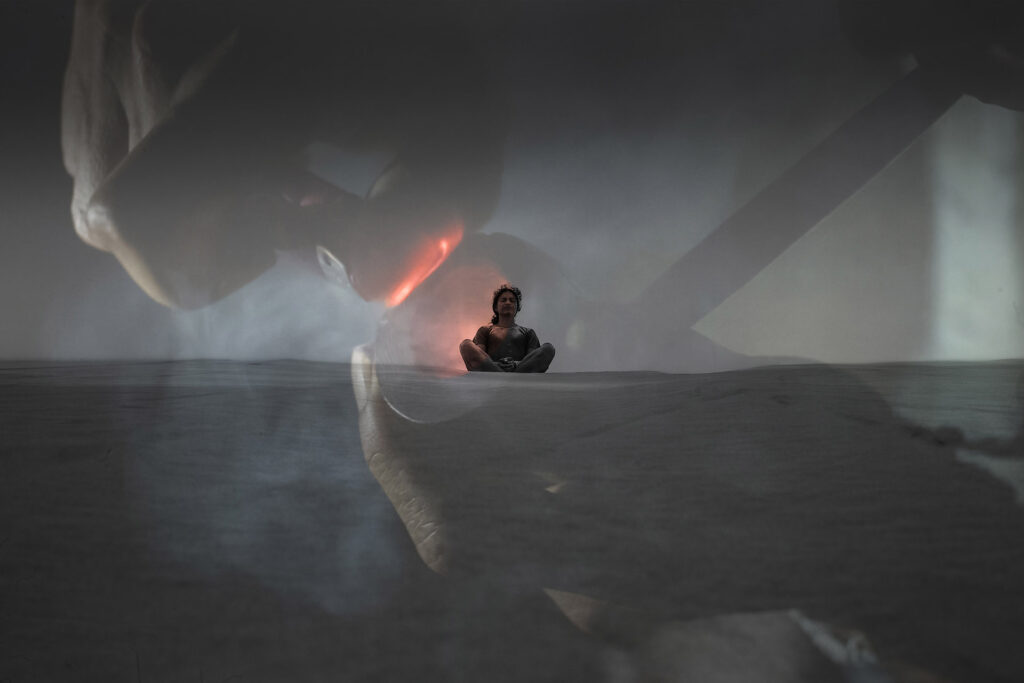
According to Kuypers et al. in their 2016 paper, ayahuasca may increase creative divergent thinking, which can “enhance and strengthen psychological flexibility by allowing individuals to generate new and effective cognitive, emotional, and behavioral strategies.”17
Likewise, we are now seeing the rise of the psychedelics industry. Some companies are already valued at billions of dollars.18 For example, Atai Life Sciences, a German psychedelic biotech company backed by billionaire investor Peter Thiel, is investigating psychedelic substances to treat mental health disorders and is now reportedly worth $2 billion (USD).19 As of July 31, 2021, Atai has raised over $300 million in capital since its founding in 2018.20 Ayahuasca, however, is not the simplest of substances to commercialize. It is a complex mixture that takes a long time to prepare. The consumption of ayahuasca causes nausea and its effects on the body can last for several hours. Draulio says that MDMA or LSD are comparatively easier to use, and “because they are manmade, [their] non-ritualistic use does not constitute any cultural aggression.” Nonetheless, the current Silicon Valley trend of microdosing psychedelics has included the regular intake of ayahuasca. Retailers claim that it enhances neuroplasticity, boosts learning, shifts perspective, and reduces symptoms of depression and anxiety. Several sites across the internet sell small flasks under headlines such as “The Best Ayahuasca Vine Extracts for 2021.”
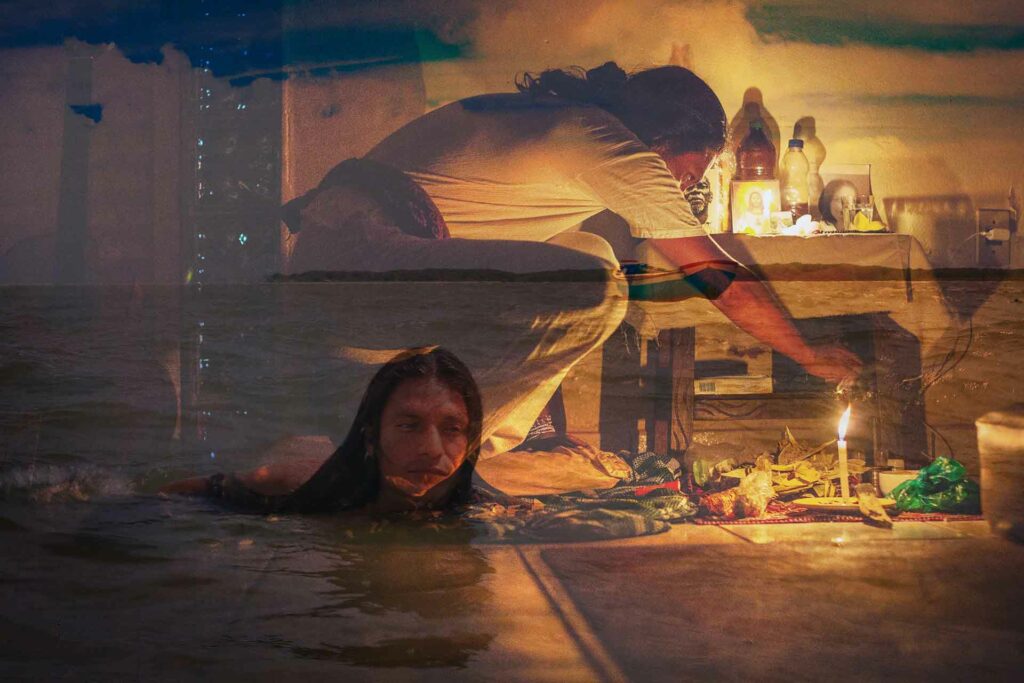
In The Cosmic Serpent, Jeremy Narby writes, “Shamanism resembles an academic discipline … Both indigenous and mestizo shamans consider people like the Shipibo-Conibo, the Tukano, the Kamsá, and the Huitoto as the equivalents to universities such as Oxford, Cambridge, Harvard, and the Sorbonne; they are the highest reference in matters of knowledge. In this sense, ayahuasca-based shamanism is an essentially indigenous phenomenon. It belongs to the indigenous people of Western Amazonia, who hold the keys to a way of knowing that they have practiced without interruption for at least five thousand years. In comparison, the universities of the western world are less than nine hundred years old.”21
Ayahuasca can guide users on spiritual paths, assist in personal growth, and open the mind up to new perceptions. Indigenous botanical knowledge offers another gift to the world. It remains to be seen whether the future use of ayahuasca will be different from the sordid histories of the tobacco and coca industries, which are responsible for serious health issues and chronic addictive behaviors in the West. Could ayahuasca prescribed as a pill have the same medical impact as when it is taken during sacred ceremonies guided by shamans? And as Indigenous knowledge is co-opted to generate profits and further the careers of those in industrialized nations, will there be any benefits shared with the people of the forest?22
As the morning after my ayahuasca experience came to an end, Claudio had a plane to catch to São Paulo. Around him were three suitcases and a guitar, and not much time left to get to the airport. He laughed and said, “People call me, and that’s how I find my way …” As we wished each other goodbye, he added that in Peru they share a fundamental principle called Ayni. It is a law of reciprocity, a way to be thankful for everything one receives. He advised me: “One needs to make sure that one’s Ayni is balanced, otherwise it can cause diseases. When the Ayni is in equilibrium, people say they are in Sumak Kawsay, or Vivir Bonito.”—a blissful life.
About the Author
Miguel Pinheiro is a former neuroscientist and an award-winning Portuguese artist who focuses on the biocultural diversity and heritage of traditional communities. His stories have been published in Europe, Africa, and the Americas. His photographic work has been shown in solo and collective exhibitions. Currently, he is developing a documentary about endangered cultures in the Amazon Rainforest, where his production company is based.
References
- Tania Soibelman, “‘My Father and My Mother, Show Me Your Beauty’: Ritual Use of Ayahuasca in Rio de Janeiro,” The California Institute of Integral Studies, 1995, http://www.neip.info/upd_blob/0000/728.pdf.
- “The giant kapok tree, the creeping aroids, and other resident architects of the Amazon rainforest,” World Wide Fund for Nature, Accessed July 30, 2021, https://wwf.panda.org/discover/knowledge_hub/where_we_work/amazon/about_the_amazon/wildlife_amazon/plants/.
- Richard Evans Schultes, “Hallucinogens in the Western Hemisphere,” in Flesh of the Gods: The Ritual Use of Hallucinogens, ed. Peter T. Furst (Waveland Press, 1990), 38.
- Susana Baca De La Colina, “Resolución Ministerial,” Perú Ministerio de Cultura, August 25, 2011, https://gobpe-production.s3.amazonaws.com/uploads/document/file/215160/rm320-otorgaralsrferminmurayariaguilar-ladistinciondepersonalidadmeritoriadelacultura.pdf.
- Catherine Lutz, “Michael Pollan’s Case for Tripping to Heal,” The Aspen Institute, August 22, 2018, https://www.aspeninstitute.org/blog-posts/michael-pollans-case-for-tripping-to-heal/.
- Miguel Pinheiro, “TERRA PRETA?” MiguelPinheiro.com, accessed 2020, http://www.miguelpinheiro.com/trabalhos/terra-preta/.
- Miguel Pinheiro, “Land and Language,” Mongabay, November 5, 2020, https://news.mongabay.com/2020/11/land-and-language-indigenous-cultures-key-to-protecting-amazon-biodiversity/.
- Mark Cartwright, “Inca Civilization,” World History Encyclopedia, September 15, 2014, https://www.worldhistory.org/Inca_Civilization/.
- Luis Eduardo Luna, “Indigenous and mestizo use of ayahuasca. An overview,” in The Ethnopharmacology of Ayahuasca, ed. Rafael Guimarães dos Santos (Transworld Research Network, 2011), 1-21, http://iceers.org/Documents_ICEERS_site/Scientific_Papers/ayahuasca/Rafael_Guimares_The%20Ethnopharmacology_of_Ayahuasca/EthnopharmAyahuasca_Chapter1.pdf.
- “List of Psychotropic Substances under International Control,” International Narcotics Control Board, 24th edition, May 2010, https://www.upu.int/UPU/media/upu/files/postalSolutions/programmesAndServices/postalSupplyChain/customs/listCustomsPsychotropicSubstancesUnderInternationalControlEn.pdf.
- Francisco Guerra, The Pre-Columbian Mind (Seminar Press: London, 1971), 181.
- “List of Psychotropic Substances.”
- Fernanda Palhano-Fontes et al., “Rapid antidepressant effects of the psychedelic ayahuasca in treatment-resistant depression: a randomized placebo-controlled trial,” Psychological Medicine 49 no. 4 (June 15, 2018): 655–663, http://doi.org/10.1017/S0033291718001356.
- Nicole Leite Galvão-Coelho et al., “Changes in inflammatory biomarkers are related to the antidepressant effects of Ayahuasca,” Journal of Psychopharmacology 34 no. 10 (July 10, 2020): 1125-1133, http://doi.org/10.1177/0269881120936486; Lorenzo Pasquini, Fernanda Palhano-Fontes, and Draulio B Araujo, “Subacute effects of the psychedelic ayahuasca on the salience and default mode networks,” Journal of Psychopharmacology 34 no. 6 (April 7, 2020): 623-635, http://doi.org/10.1177/0269881120909409.
- “Depression,” World Health Organization, January 30, 2020, http://www.who.int/news-room/fact-sheets/detail/depression.
- Jerome Sarris et al., “Ayahuasca Use and reported effects on depression and anxiety symptoms: An international cross-sectional study of 11,912 consumers,” Journal of Affective Disorders Reports 4 (April 2021), https://doi.org/10.1016/j.jadr.2021.100098.
- K. P. C. Kuypers et al., “Ayahuasca enhances creative divergent thinking while decreasing conventional convergent thinking,” Psychopharmacology 233, no. 18 (July 19, 2016): 3395-3403, http://doi.org/10.1007/s00213-016-4377-8.
- Eyk Henning, “Thiel-Backed Psychedelics Firm Hits $2 Billion Valuation,” Bloomberg, March 3, 2021, https://www.bloomberg.com/news/articles/2021-03-03/thiel-backed-magic-mushroom-firm-atai-hits-2-billion-valuation.
- Henning, “Thiel-Backed.”
- Christine Hall, “The Briefing: Outbrain, ATAI Life Sciences File For IPOs, ActiveCampaign Raises $240M, And More,” Crunchbase, April 21, 2021, https://news.crunchbase.com/news/briefing-4-21-21/.
- Jeremy Narby, The Cosmic Serpent: DNA and the Origins of Knowledge (United Kingdom: Orion, 2016), 85.
- “Psychedelic Drug Market Has Become A Billion Dollar Industry As Acceptable Treatments Expand,” Financial News Media, May 25, 2021, https://www.financialnewsmedia.com/psychedelic-drug-market-has-become-a-billion-dollar-industry-as-acceptable-treatments-expand/.


